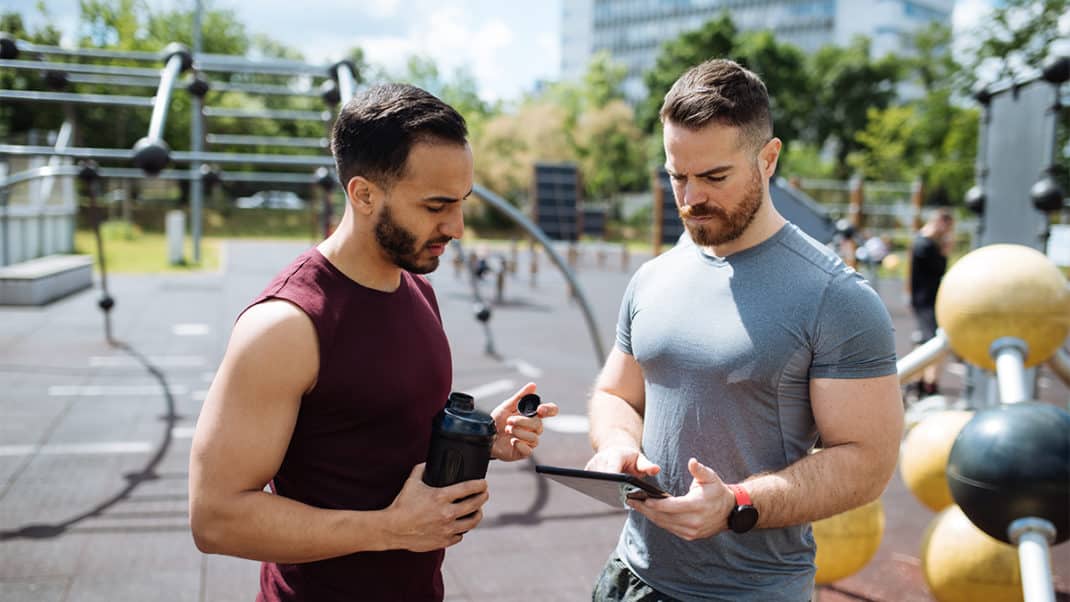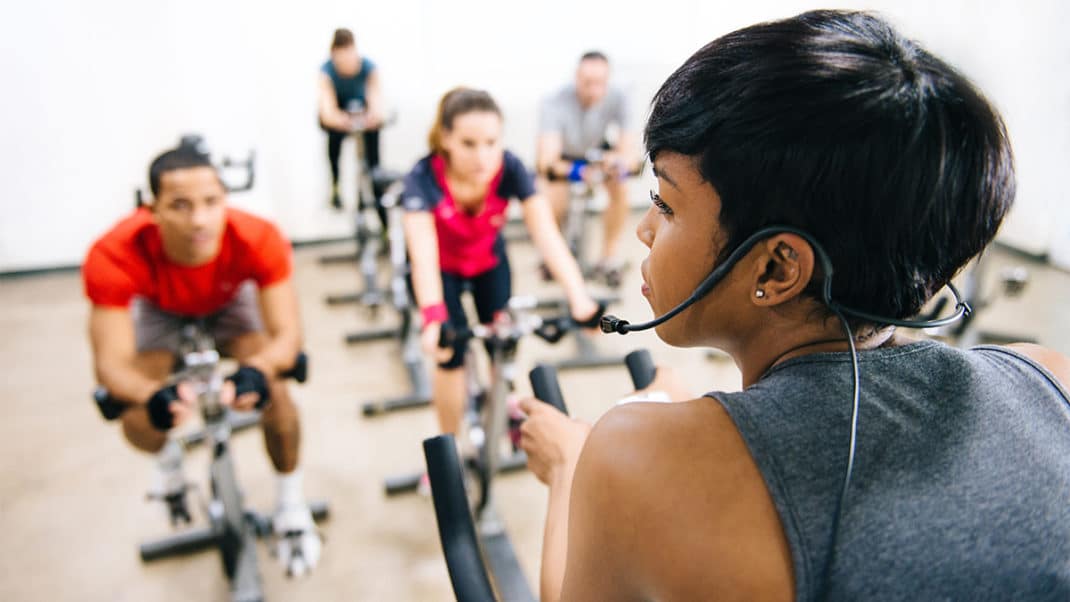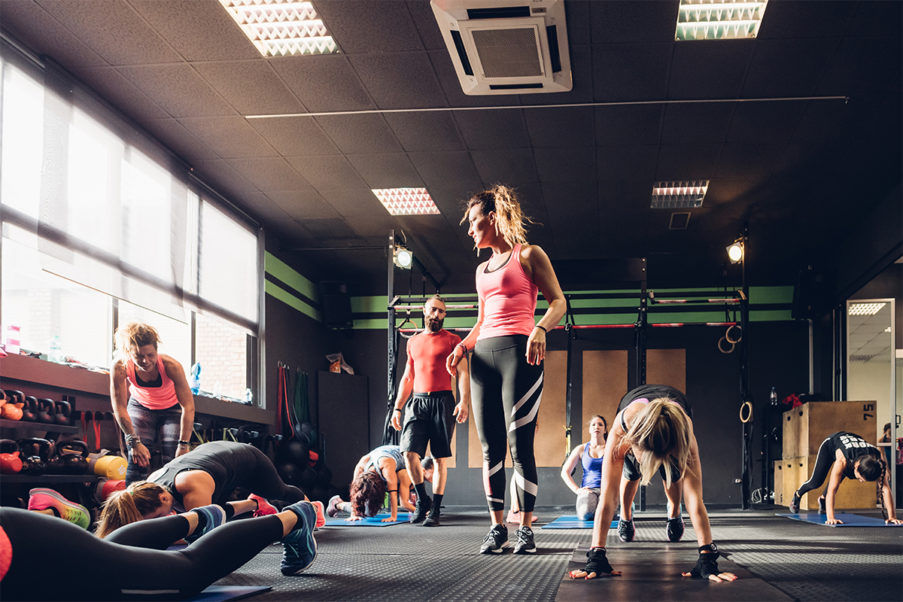Sample Class: The Kids Wanna Dance!
Mix drills and skills with simple dance routines to engage 7- to 12-year-olds.
Call it dance. Call it exercise. When kids move to music, they call it fun! Kids’ fitness programs are gaining momentum in schools, community centers, dance studios, gymnastics facilities and health clubs. Maybe now is the time for you to bring your fitness expertise and love of music and movement to the next generation of lifelong exercisers.
Whether you want to teach a dance-specific program or a mixed-activity class that incorporates dance movement, you don’t have to be a professional choreographer to design memorable, entertaining routines that keep kids motivated. The following simple formulas will help you create a library of “dances” that incorporate cardiovascular conditioning, strength intervals, skill training and partner fun. Choose the option that best fits your personal dance ability and get those kids moving!
Kids Wanna Dance! Details
Format: An activity session for boys and girls 7- to 12-years-old. A 10:1 student-to-instructor ratio is ideal. Instructors experienced with this age group (e.g., elementary-school teachers) may be comfortable with a ratio of 15:1 or more.
Total Time: 45–60 minutes
Equipment Needed: None required. Hula-Hoops, BOSU® Balance Trainers and resistance tubing are optional.
Music: Choose a wide variety of positive, catchy, energetic songs from several genres such as pop, hip-hop, Latin, swing, disco, classical and country. The kids will likely enjoy most the songs they’ve never heard before (from other generations). Screen songs for appropriate language and subject matter, especially when choosing from pop and hip-hop numbers.
Choreography Formulas
Choose one of the following formulas as part of a general mixed-activity class, or string them together to create a custom session.
Skill Sampler. This is an easy way to warm up the class while gauging students’ abilities and discovering what kind of music excites them. First, choose five to 10 songs from different genres, and then for each selection choreograph one move that represents that song’s style. Hear are some examples:
- “I’m Real” by Jennifer Lopez (hip-hop, funky march)
- “Soul Bossa Nova” by Quincy Jones (‘60s; “The Pony”: Hop 2 counts on each foot while lifting same arm—bent at elbow—in forward direction up to shoulder, with hand in fist.)
- “She’s a Bad Mama Jama” by Carl Carlton (disco, wide twisting march with “John Travolta finger” pointing up and down diagonally)
Stand at the front facing the class and teach each move. Direct kids into two or more lines at one end of the room. As you play the first song, cue the kids to dance the move across the floor, one after another. As they reach the opposite end of the room, they run or skip back to join their lines. Change songs after everyone has gone once. Repeat for five to 10 songs.
As the group becomes confident with the dance steps, use the moves to play “Dance! Freeze!” Play a song and ask the kids to remember the move that goes with it. They perform that move until you stop the music, then they freeze and wait for you to choose the next song. Mix up the songs to keep the kids guessing.
Follow the Music. Pick a song with lyrics that do the cuing for you. Once you’ve taught the moves, the kids follow the dance by listening to the song. They memorize both the choreography and the lyrics, which kids love to do! This method gives you a break from cuing.
Example
Song: “Cha-Cha Slide” by Mr. C the Slide Man
Teach and practice the following six moves to “Cha-Cha Slide” or any other song at approximately 120 beats per minute (bpm):
1. March in place and clap on the upbeat (1, clap 2, 3, clap 4, etc.).
2. “Wide march” backward 4x.
3. Hop in place 1–4x.
4. Do 4 wide stomps right foot, 4 wide stomps left foot.
5. Cha-cha in place.
6. Walk a 4-count circle right, then a 4-count circle left (footwork = 1, 2, 3, tap).
Play “Cha-Cha Slide” and follow the lyrical sequence of the moves. The six moves become one combination that repeats throughout the song. The order and number of repetitions vary slightly. The kids must pay close attention to hear how many “hops” they will perform in each combination—1, 2, 3 or 4. Have your class yell out the number of hops!
Dance, Etc. Divide a song into three easily identifiable parts such as “verse,” “chorus” and “bridge/extra counts,” or “part one,” “part two” and “part three.” Choose a choreography pattern based on class goals and your own dance ability.
Example
Verse: simple dance combination that fits the style of the song
Chorus: simple dance move that fits the style of the song
Bridge/Extra Counts: strength move (squats, push-ups, tubing exercise)
Song: “Whoop Whoop” by Kj-52
Teach and practice the following two dance combinations to “Whoop Whoop” or any other hip-hop song.
Verse (32 counts total):
- Do wide 2-count stomps moving forward 4x.
- With feet apart, swing right arm across body “hip-hop style” for 7 counts; jump together on count 8.
- Do wide 2-count stomps moving backward 4x.
- Turn to right wall and bounce in place 4x.
- Turn to left wall and bounce in place 4x.
- Repeat.
Chorus (16 counts total):
- Travel forward, step-touch right, push hands up high (2 counts), step-touch left, push hands low (2 counts).
- Move backward, step-touch right, push hands up high (2 counts), step-touch left, push hands low (2 counts).
- Repeat.
Teach and practice any of the following:
- a correct push-up (with options from toes and knees)
- balance activities on the BOSU® ball (e.g., standing on one leg; “Superman” spinal extension lying across the BOSU ball; or bent-knee V-sit)
- a tubing exercise (e.g., biceps curl or shoulder press)
Bridge/Extra Counts: Walk around room “with attitude” (32-count rest), then get down on floor and do as many push-ups as possible with good form before chorus repeats.
Put the three parts together to “Whoop Whoop.” Dance the song from start to finish.
The traditional layering techniques used in group exercise choreography are not effective when teaching dance moves to children. Teach the complete move slowly until students are comfortable, and then let them try it to the song’s tempo. Repetition is key.
The more they dance the step, the more confident and successful your young exercisers will feel.
Variety is important for keeping this age group (7- to 12-year-olds) interested. Change activities every 15 minutes and teach only one part of each combination per class. This gives the kids something to look forward to in the next session and gives you material that will last for several weeks. Once you’ve completed a full routine, celebrate by staging a “show” for parents or facility staff.
Juliane Arney
Juliane ÔÇ£JulzÔÇØ Arney is a dance-fitness specialist with 18 years' experience, lead master trainer for Schwinn┬« Cycling professional education, author, group exercise programming consultant and the star/creator of multiple dance video productions. Certifications: ACE, AFAA





